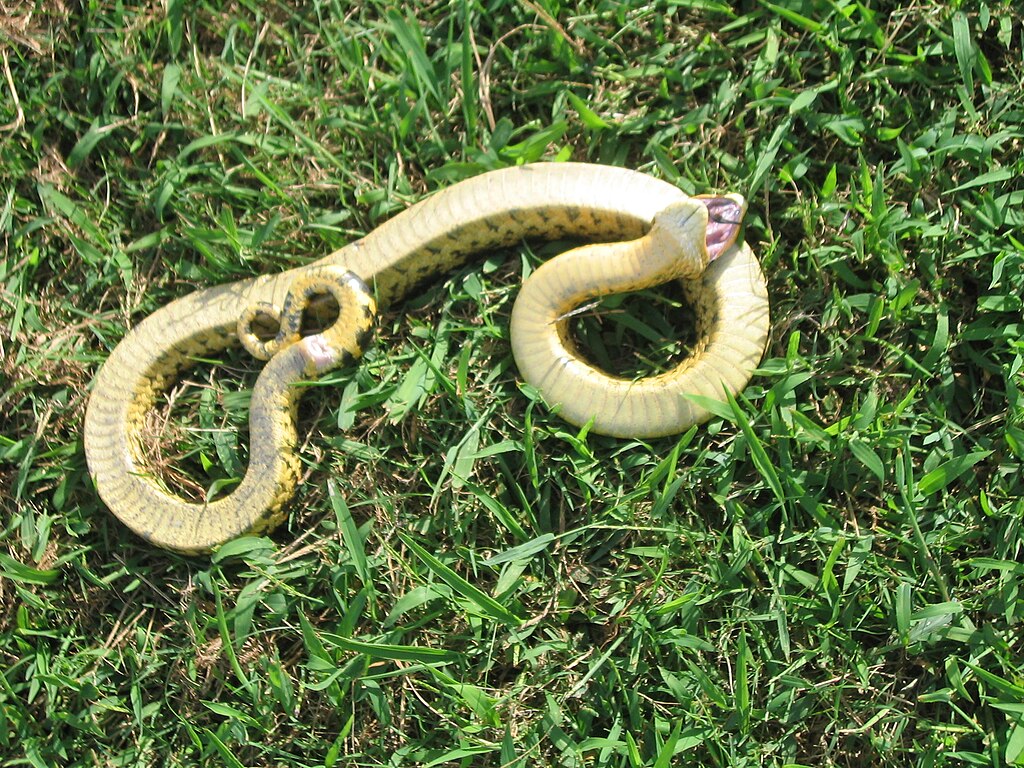In the intricate dance of predator and prey, non-venomous snakes face a particular challenge. Without venom as a defense mechanism, these remarkable reptiles have evolved an impressive arsenal of alternative survival strategies. From elaborate behavioral displays to physical adaptations, these serpents demonstrate that cunning and deception can be just as effective as fangs and venom. This article explores ten fascinating examples of how non-venomous snakes outsmart their would-be predators, showcasing the evolutionary ingenuity that has allowed these species to thrive despite their seemingly vulnerable position in the food chain.
The Hognose Snake’s Dramatic Death Performance
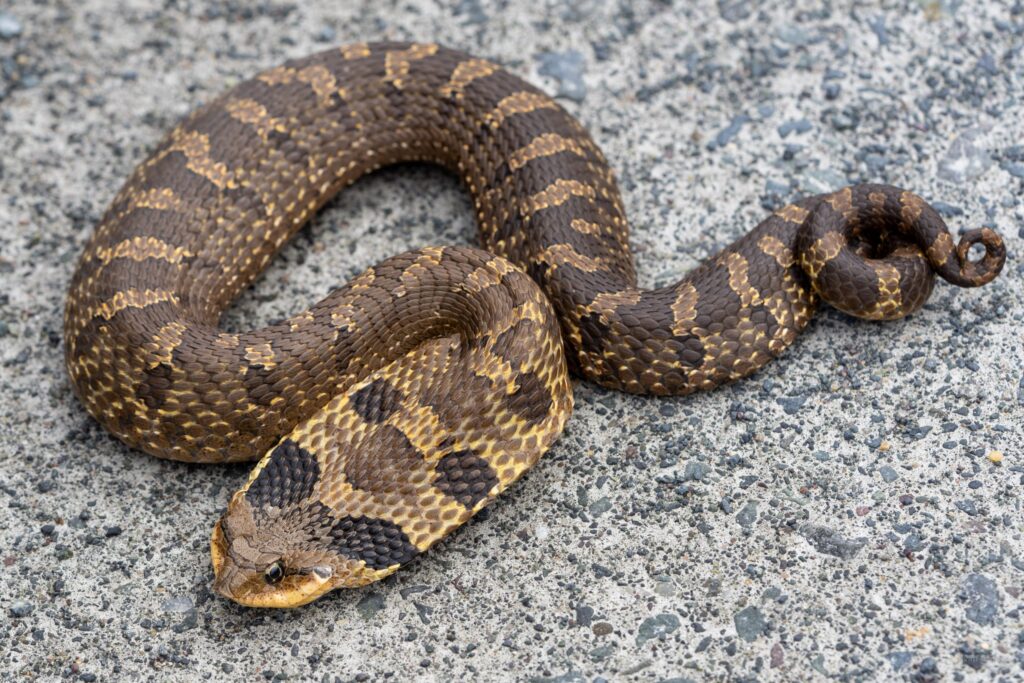
When confronted by a predator, the hognose snake puts on one of nature’s most convincing theatrical performances. First, it will flatten its neck and hiss loudly, mimicking the threatening display of a cobra. If this initial bluff fails to deter the predator, the hognose escalates to an Oscar-worthy death scene—rolling onto its back, mouth agape, tongue lolling out, and sometimes even releasing a foul-smelling musk from its cloaca to enhance the illusion of decomposition. This elaborate charade often succeeds in fooling predators who typically avoid dead prey due to potential disease or toxins. Remarkably, the hognose’s commitment to the act is so complete that it will repeatedly roll back onto its back if turned right-side up during its performance.
The Coral Snake Mimic’s Deceptive Coloration
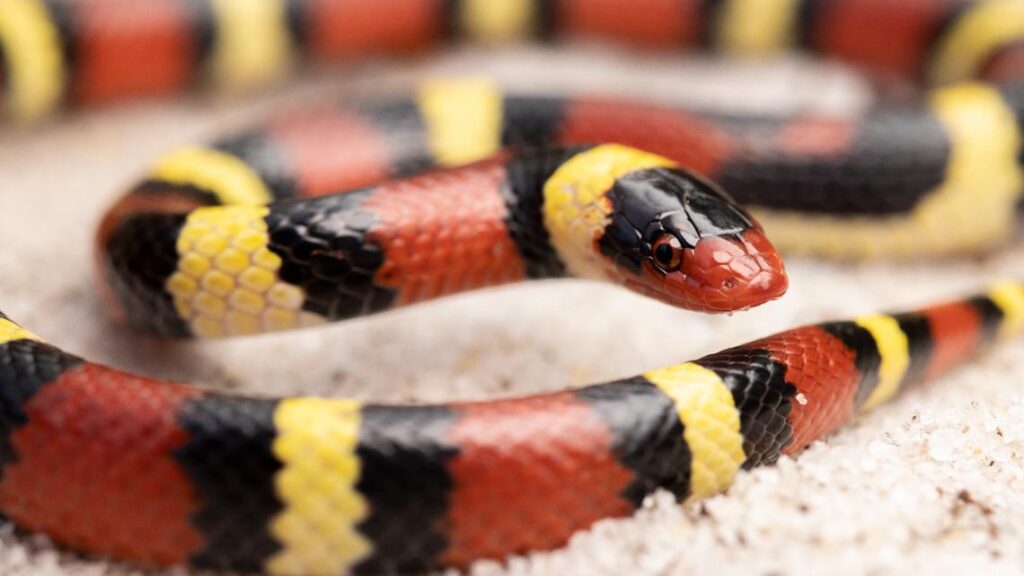
Several non-venomous snake species, including the scarlet kingsnake and milk snake, have evolved to display color patterns strikingly similar to the highly venomous coral snake. This phenomenon, known as Batesian mimicry, provides these harmless serpents with protection by causing predators to mistake them for their dangerous lookalikes. The mimicry is so effective that it gave rise to the famous rhyme, “Red touch yellow, kill a fellow; red touch black, friend of Jack,” which helps people distinguish between venomous coral snakes and their harmless doppelgängers. Research has shown that predators like birds and mammals learn to avoid the distinctive warning coloration after negative encounters with true coral snakes, inadvertently extending this protective benefit to the mimics. The evolutionary success of this strategy is evidenced by its independent development in multiple snake species across different geographical regions.
The Eastern Indigo Snake’s Intimidating Size
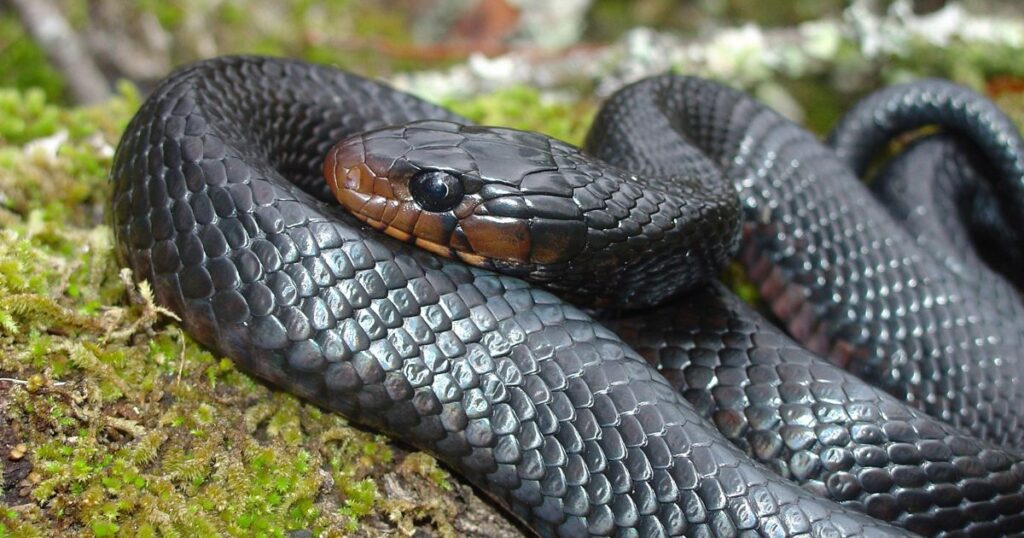
The Eastern Indigo snake, North America’s longest native snake species, leverages its impressive size as a primary defense strategy against would-be attackers. When threatened, this magnificent serpent will stand its ground and raise the front third of its body off the ground in an imposing display that can reach heights of three to four feet. This vertical posture, combined with the snake’s iridescent black-blue coloration and muscular build, presents a formidable sight that gives many predators pause. The indigo snake may enhance this display by inflating its throat, producing a loud hissing sound, and vibrating its tail against dry leaves to mimic a rattlesnake. Despite being non-venomous, the Eastern Indigo’s size and confidence are so effective that it successfully preys upon venomous snakes like rattlesnakes and cottonmouths, demonstrating that even in the world of predators, a good bluff can sometimes be enough.
The Garter Snake’s Communal Defense Strategy
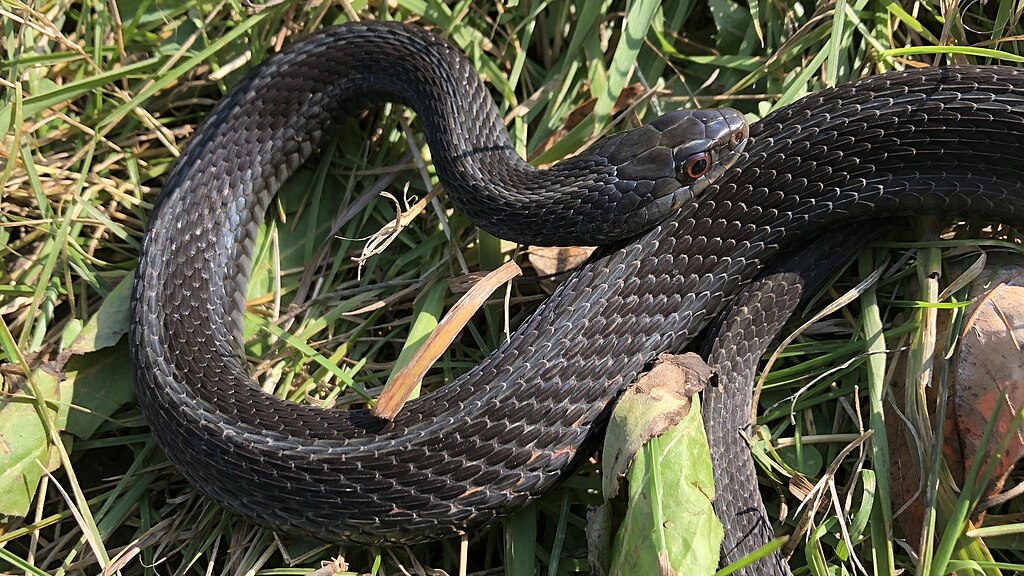
Garter snakes employ a fascinating social defense mechanism that demonstrates strength in numbers. During winter hibernation, these snakes gather in communal dens called hibernacula, sometimes containing thousands of individuals tangled together in a massive writhing ball. This aggregation serves multiple defensive purposes beyond thermal regulation. When a predator approaches such a large group, it faces the disorienting visual challenge of targeting a single snake among the mass of moving bodies. Additionally, the collective musk released by so many snakes creates an overwhelming deterrent odor. Should a predator still attempt an attack, the chances of any individual snake being captured are statistically reduced, similar to the protective effect seen in fish schools or bird flocks. This communal strategy proves particularly effective against predators like hawks and foxes that might easily target a solitary garter snake but become confused when facing hundreds simultaneously.
The Grass Snake’s Strategic Feigning of Death
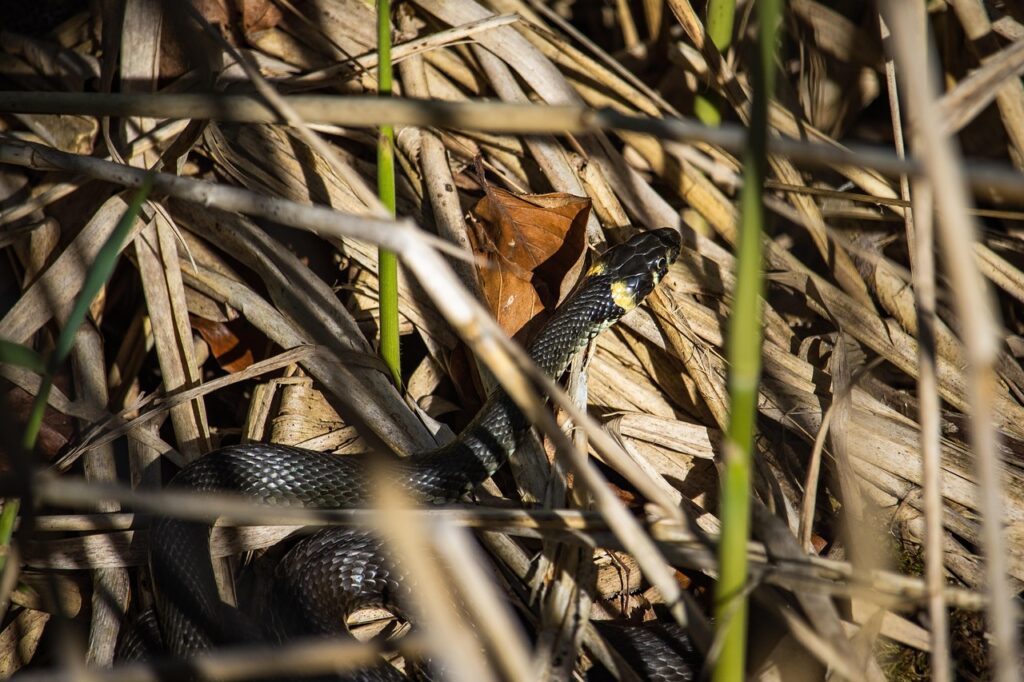
The European grass snake employs a sophisticated defensive strategy that goes beyond simple death-feigning. When seriously threatened, this harmless colubrid will first discharge a foul-smelling substance from its anal glands, creating an immediate deterrent for predators with keen olfactory senses. Following this chemical defense, the grass snake will contort its body, open its mouth, and allow its tongue to hang out, creating a convincing impression of death. What makes this performance particularly effective is the snake’s ability to control its heart rate and breathing patterns during this display, making even close inspection by predators unlikely to reveal the ruse. The grass snake will maintain this state of apparent death for extended periods if necessary, sometimes for thirty minutes or more, resuming normal activity only when it determines the threat has passed. This multi-layered defensive approach showcases how non-venomous snakes can integrate physiological control, behavioral adaptation, and chemical deterrents into a comprehensive survival strategy.
The Ball Python’s Protective Coiling Technique\
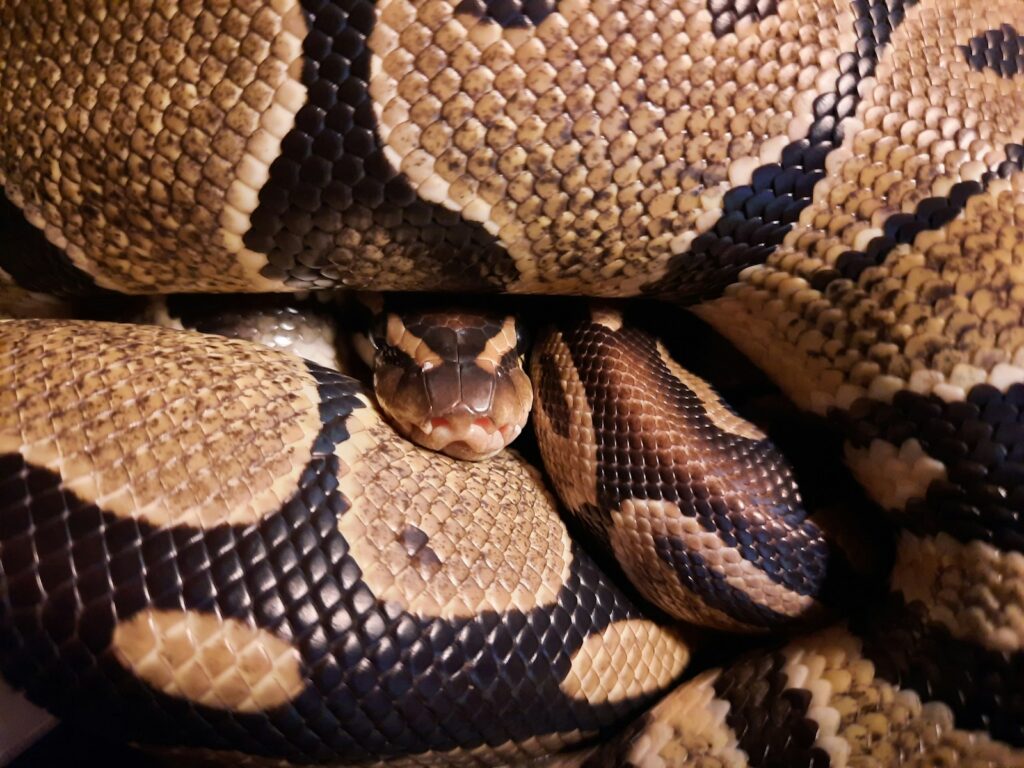
The ball python earns its common name from its distinctive defensive posture that transforms this serpent into an armored sphere when threatened. When facing danger, the ball python rapidly coils its body into a tight ball, tucking its head securely in the center of the coil and protecting its most vulnerable anatomy with layers of muscular body segments. This defensive position presents would-be predators with a challenging situation—rather than encountering an elongated, easily-targeted snake, they face a compact, muscle-reinforced ball with no obvious point of attack. The effectiveness of this strategy is enhanced by the ball python’s relatively thick scales and muscular body, making it difficult for predators to find purchase or inflict damage. Many predators, after several unsuccessful attempts to unravel or penetrate this living fortress, will abandon the effort in favor of easier prey, allowing the python to remain safely coiled until the danger has passed.
The Rat Snake’s Tactical Tree-Climbing Escape
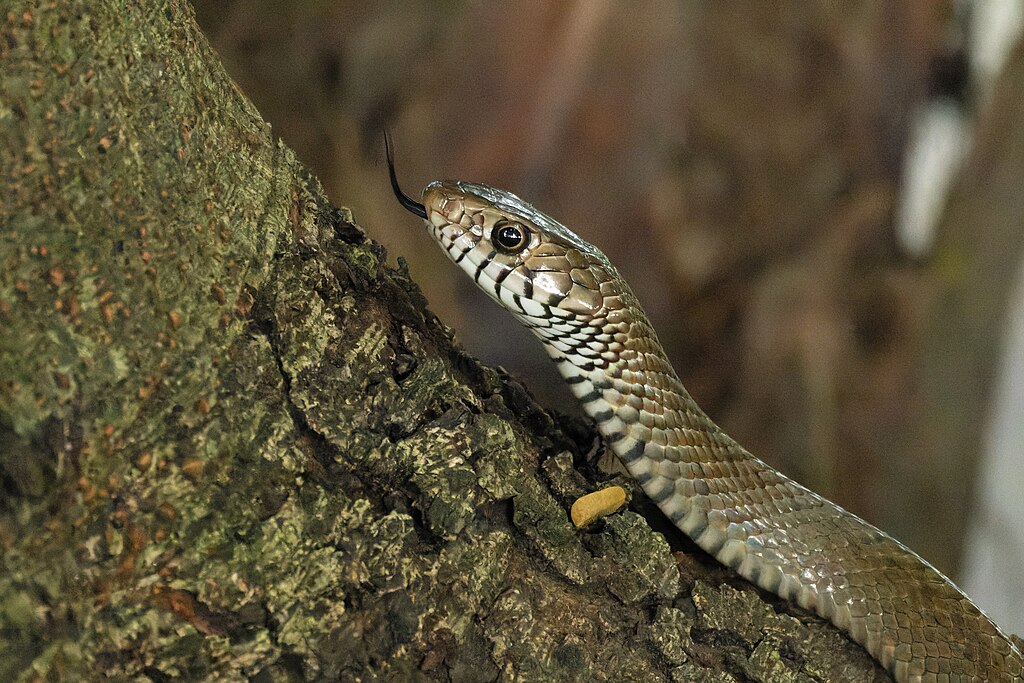
Rat snakes have developed remarkable arboreal agility that serves as both a hunting advantage and a crucial predator evasion tactic. When threatened on the ground, these adaptable serpents can rapidly ascend trees, utilizing their specialized ventral scales that provide enhanced grip on bark and branches. Unlike many snake species that become vulnerable during climbing, rat snakes maintain impressive speed and maneuverability in three-dimensional environments, often outpacing ground-dwelling predators that lack comparable climbing abilities. Their slender bodies and excellent balance allow them to navigate even the thinnest branches where heavier predators cannot follow. This escape strategy proves particularly effective against mammalian predators like foxes and coyotes, which may initially pursue but rarely follow rat snakes into the upper reaches of trees, where the snake can remain safely elevated until the threat below has moved on.
The King Snake’s Constriction Counterattack
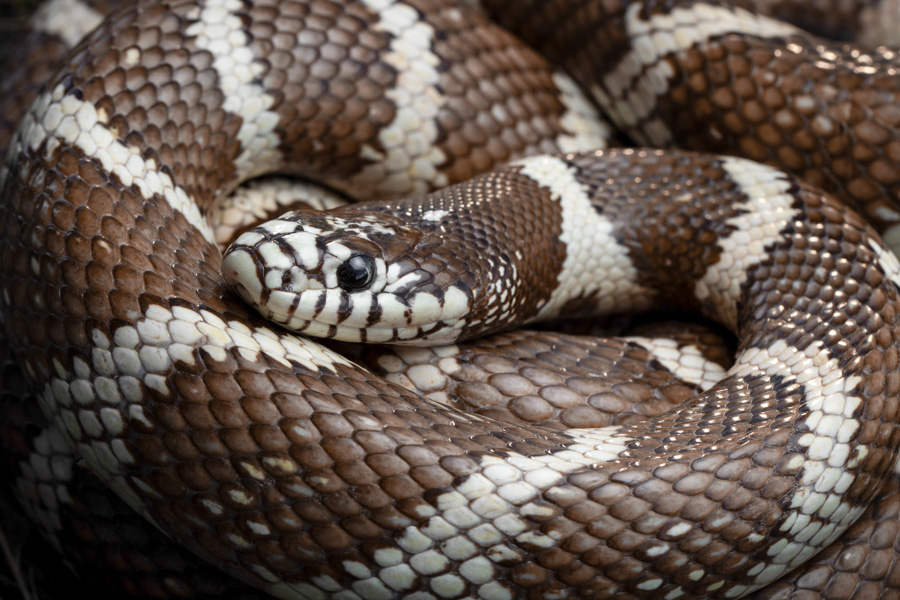
Kingsnakes have evolved from prey to predator in one of nature’s most impressive role reversals, specializing in hunting and consuming other snakes—including venomous species like rattlesnakes and copperheads. These remarkable constrictors possess a natural immunity to the venom of many pit vipers, allowing them to engage and overcome serpents that would be lethal to most other predators. When confronted by a potential snake predator, kingsnakes don’t rely on mimicry or flight but instead employ an aggressive counterattack, rapidly seizing their opponent and applying powerful constriction coils. Their specialized musculature and extraordinary strength enable them to overcome snakes nearly as large as themselves, effectively turning the tables on would-be predators. This dual-purpose adaptation serves as both an offensive hunting technique and a defensive survival strategy, positioning kingsnakes near the top of the serpentine food chain despite their lack of venom.
The Water Snake’s Aquatic Escape Artistry
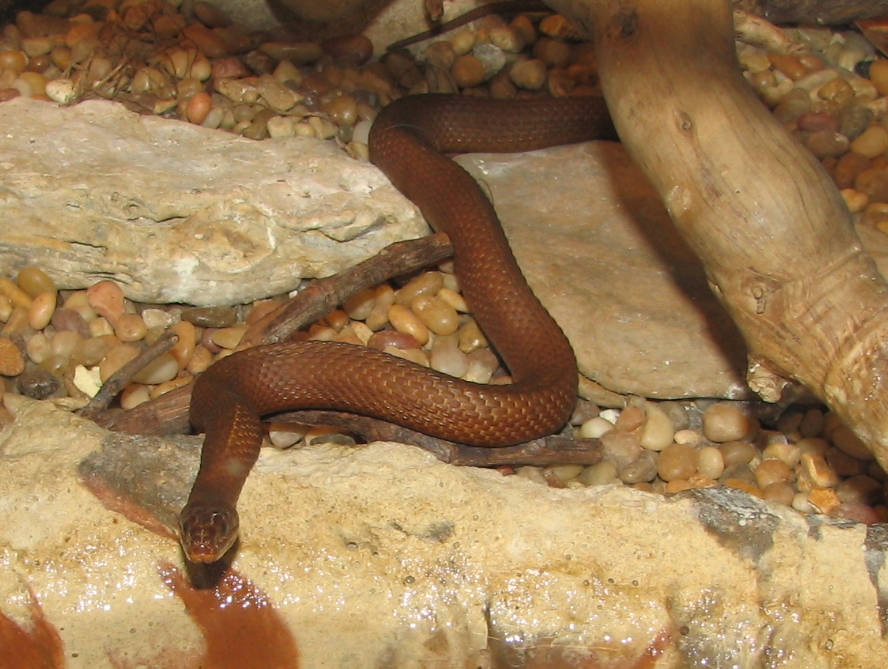
Northern water snakes and their relatives have mastered the aquatic environment as their primary defense against terrestrial predators. When threatened on land, these agile serpents make swift, direct movements toward the nearest water body, where they transform into remarkably efficient swimmers. Upon entering the water, water snakes can completely submerge themselves, remaining underwater for several minutes by slowing their metabolism and heart rate to reduce oxygen consumption. They further enhance their aquatic evasion by utilizing underwater vegetation as concealment or burying themselves in soft substrates at the water’s bottom. What makes this strategy particularly effective is the water snake’s ability to emerge just enough to extend their nostrils above the surface for breathing while keeping their body hidden, making them nearly impossible to detect for predators scanning the water. This aquatic specialization creates a sanctuary where many land-based predators are at a significant disadvantage, unwilling or unable to pursue the snake into its liquid refuge.
The African Egg-Eating Snake’s Defensive Spine Display

The African egg-eating snake possesses one of the most specialized and surprising defensive adaptations in the snake world despite its harmless nature and diet consisting exclusively of bird eggs. When threatened, this slender serpent inflates its neck dramatically and simultaneously rubs specialized scales against each other to produce a loud, intimidating hissing sound. The most remarkable aspect of this display is the projection of the snake’s vertebral processes through its skin, creating a series of spine-like protrusions along its body that give the impression of a much more dangerous adversary. This visual transformation is so convincing that many predators retreat rather than risk an encounter with what appears to be a well-armored, aggressive snake. The effectiveness of this bluff is heightened by the egg-eater’s habit of mock strikes toward predators, though it lacks functional teeth and is physically incapable of inflicting any real damage.
The Smooth Snake’s Thermal Camouflage Strategy
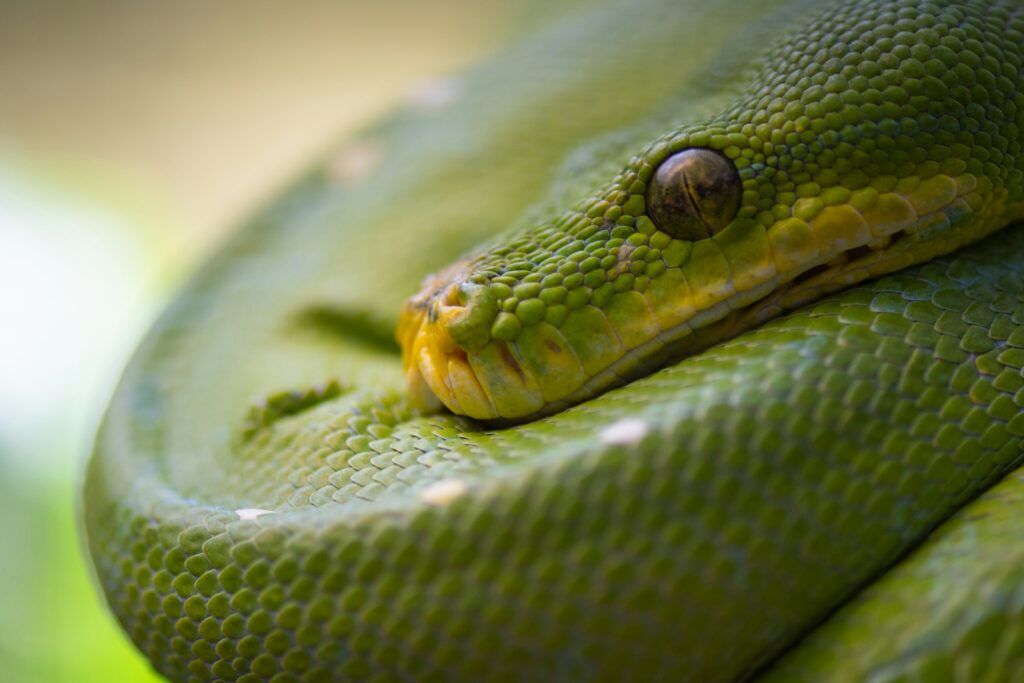
The European smooth snake employs a sophisticated form of concealment that goes beyond mere visual camouflage, incorporating thermal regulation as a defense against predators with infrared sensing capabilities. Unlike many reptiles that bask openly to raise their body temperature, smooth snakes have developed the ability to thermoregulate while remaining hidden beneath surface debris or within partial burrows. This behavior allows them to maintain optimal physiological functioning while minimizing exposure to predators like birds of prey that rely on visual detection. Even more impressive is the smooth snake’s ability to regulate its surface temperature when exposed, maintaining thermal readings closer to the ambient environment than most reptiles and thus reducing their infrared signature when facing predators like vipers that possess heat-sensing pits. Research has shown that when threatened, smooth snakes can temporarily reduce blood flow to their extremities, further diminishing their thermal profile and essentially becoming invisible to infrared detection.
The Evolutionary Arms Race of Predator and Prey

The remarkable defensive strategies employed by non-venomous snakes illustrate the evolutionary principle of an ongoing “arms race” between predator and prey species. Each adaptation by prey animals like non-venomous snakes creates selective pressure for counter-adaptations in their predators, driving both groups toward increasingly sophisticated mechanisms. This evolutionary feedback loop has resulted in the diverse array of defensive tactics we observe today, from elaborate mimicry to complex behavioral displays. What makes these adaptations particularly fascinating is how they often involve co-opting existing anatomical features for new purposes or developing multifunctional behaviors that serve both defensive and non-defensive roles. The success of non-venomous snakes across diverse habitats worldwide stands as testament to the effectiveness of these alternative defensive strategies, demonstrating that evolutionary creativity can often outshine even the most potent biological weapons like venom.
Conclusion
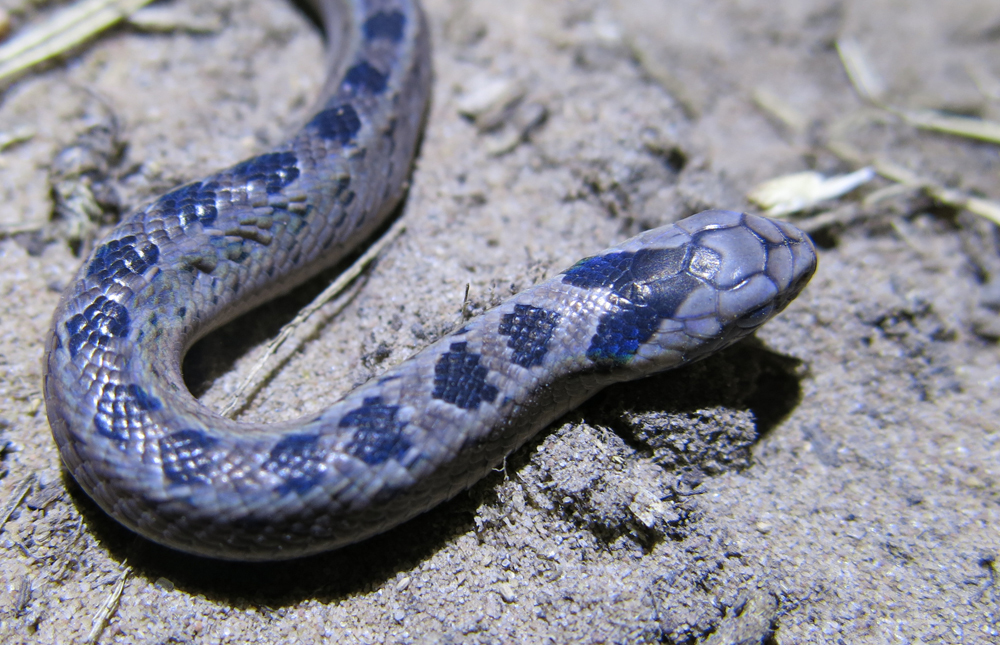
The defensive strategies employed by non-venomous snakes represent some of nature’s most innovative solutions to the challenge of survival without venom. From the theatrical death performances of the hognose snake to the sophisticated thermal camouflage of the smooth snake, these reptiles have developed an impressive diversity of methods to outsmart their predators. These adaptations not only highlight the remarkable evolutionary plasticity of snakes but also demonstrate how intelligence, deception, and behavioral complexity can provide effective alternatives to toxicity in the natural world. As we continue to study these fascinating creatures, we gain not only a deeper appreciation for their survival tactics but also valuable insights into the evolutionary processes that shape all life on our planet.

